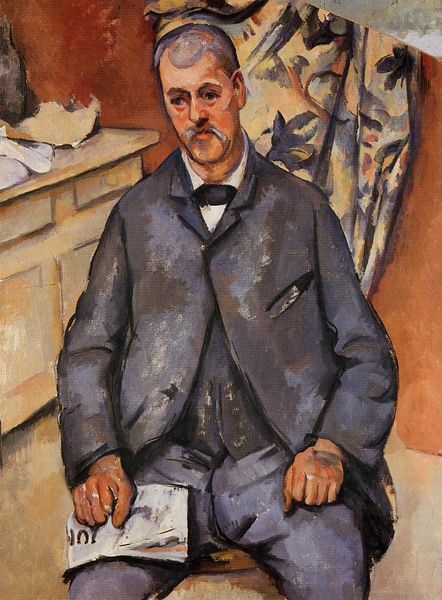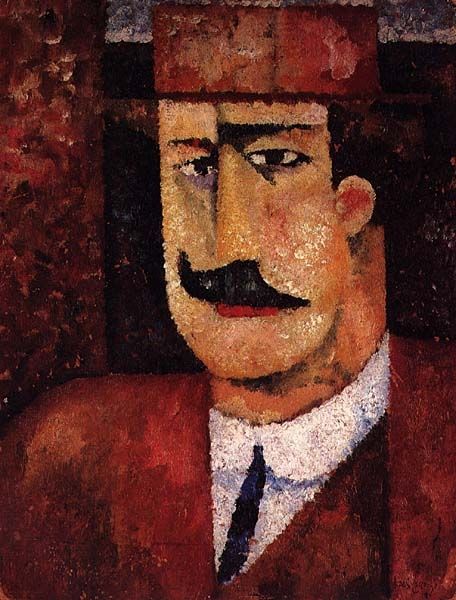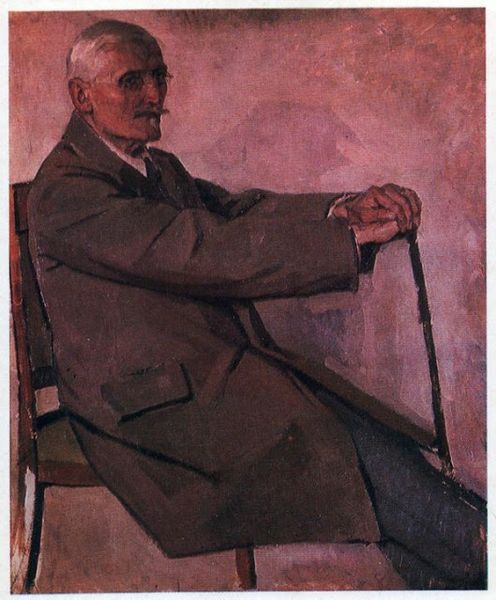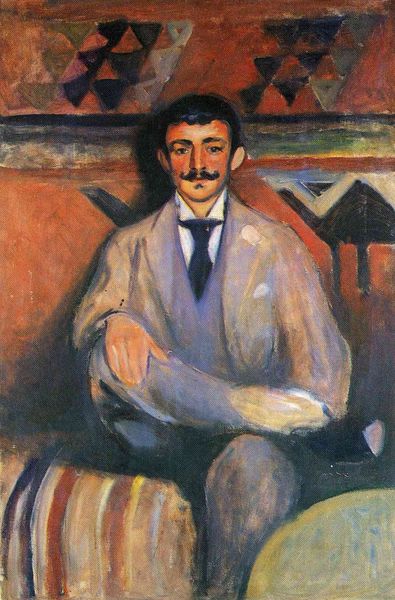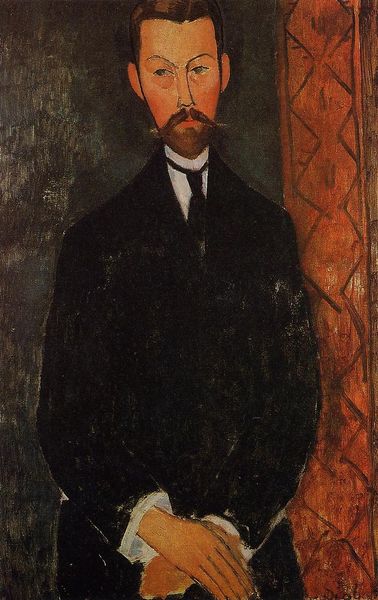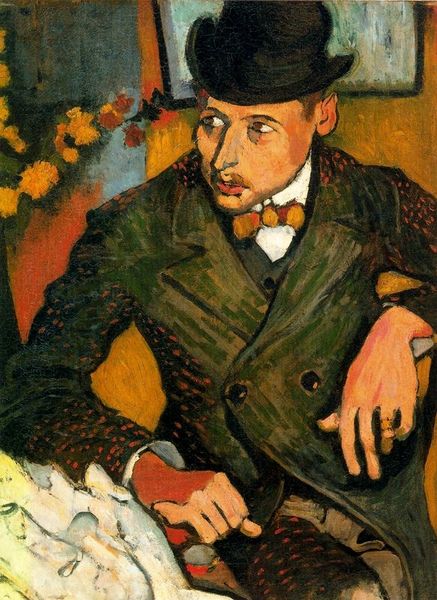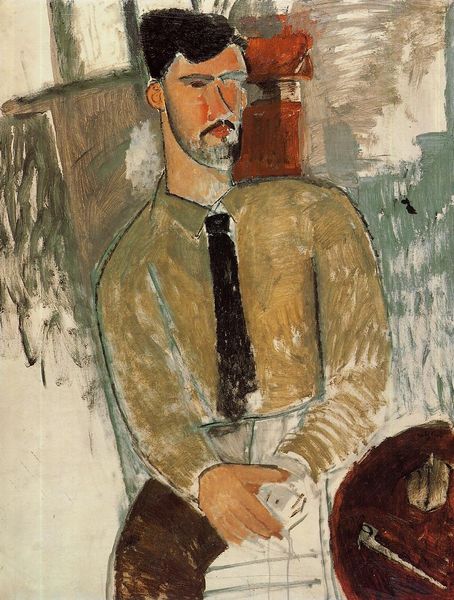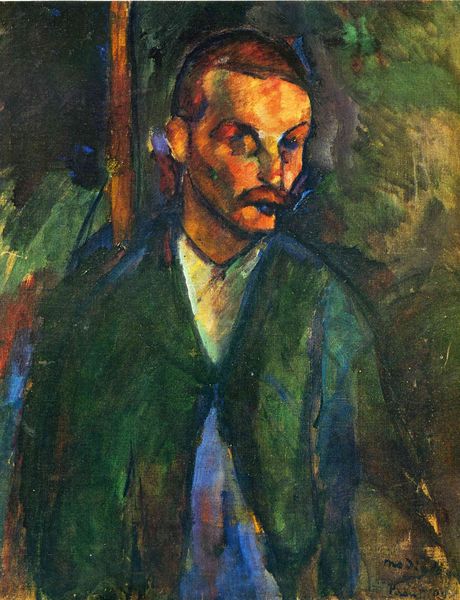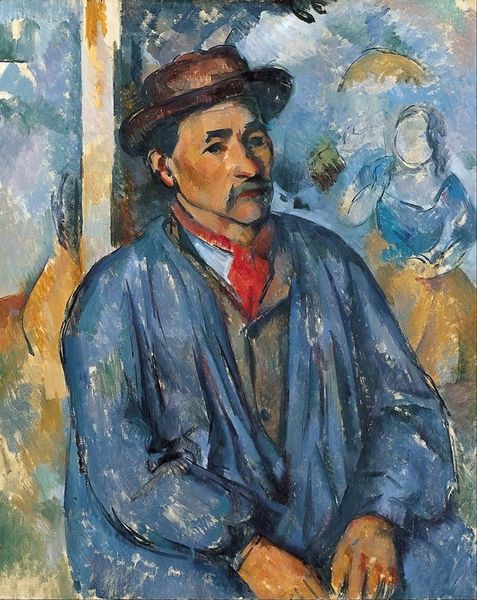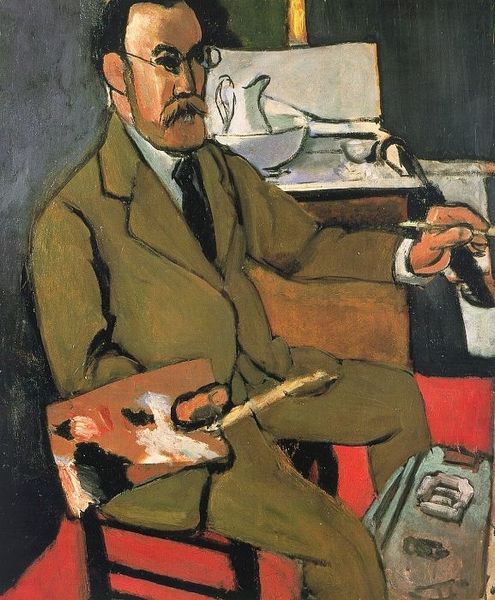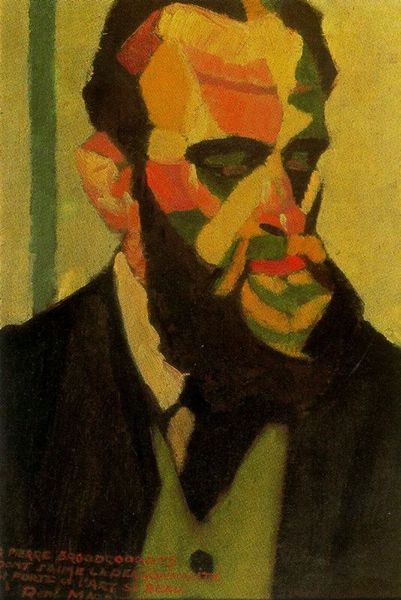
Copyright: Public domain
Editor: Here we have Amedeo Modigliani’s “Man with a Glass of Wine,” painted in 1918 using oil on canvas. There's a certain loneliness to this man; the setting seems a bit like a stage. What strikes you most about this portrait? Curator: I'm interested in how Modigliani presents this figure in relation to the post-war climate. Consider the historical context: World War I was ending, but its impact on society was profound. Do you think the man's isolation speaks to that pervasive sense of disillusionment? Editor: That's an interesting idea. The somber colours and the subject’s averted gaze definitely create a feeling of unease. Maybe this work represents the common man of that time trying to cope with the aftermath of a global catastrophe. But I also feel like Modigliani might be mythologizing the working man? Curator: Absolutely. There's a tension there. On one hand, we have this melancholic figure perhaps representative of a broken populace. On the other hand, the conscious styling and the almost theatrical presentation hint at an idealised portrayal. Think about who was allowed in the art world and in galleries at the time, and what purposes those gallery displays would have served. What societal role might Modigliani’s works have served during this time? Editor: I hadn't considered that. Placing the common man within the traditionally exclusive art world makes the painting more subversive, and suggests a form of social commentary. I definitely see new things every time I look at it. Curator: And the fact that it now resides in a private collection shifts its significance once more. It makes you wonder about the layers of meaning imposed on art, doesn’t it?
Comments
No comments
Be the first to comment and join the conversation on the ultimate creative platform.

